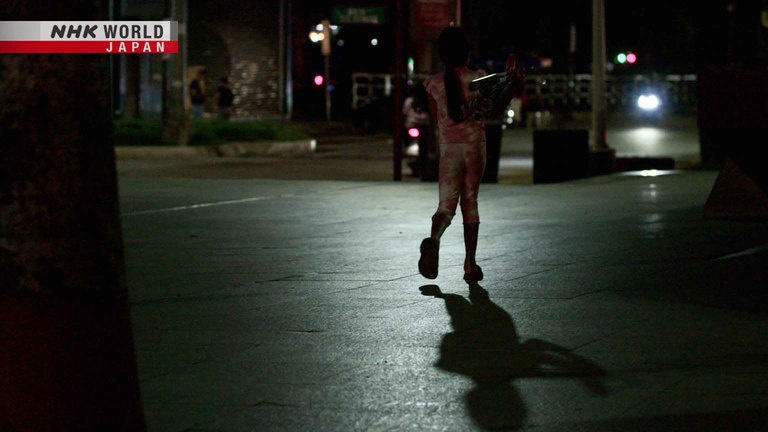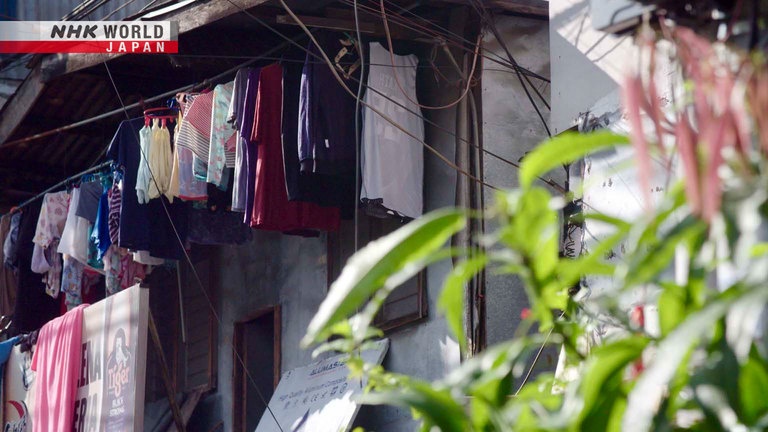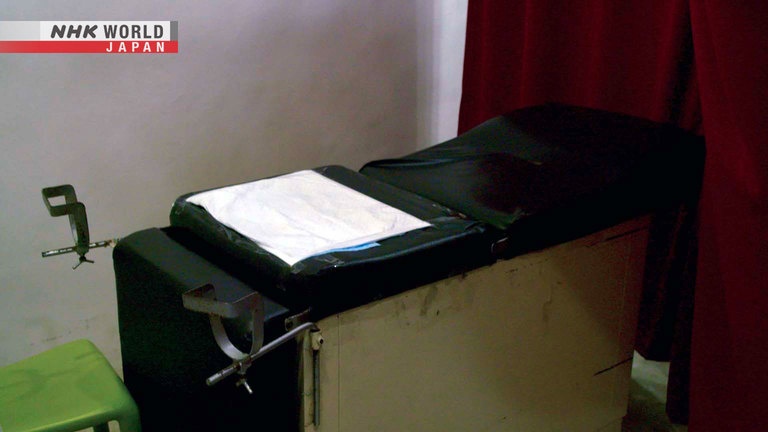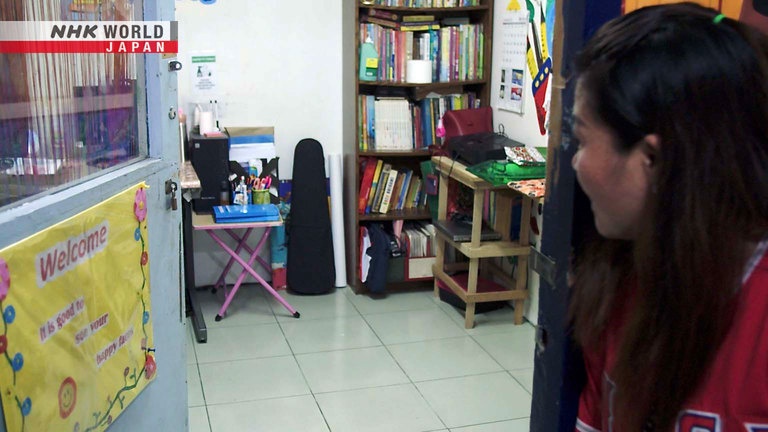Breaking the Cycle of Child Abuse: Dr. Bernadette Madrid / Pediatrician
Dr. Bernadette Madrid, a Filipina pediatrician, has brought medical, legal, social and mental health services together in a one-stop facility. Her aim is to raise awareness of child abuse.




Transcript
Direct Talk
The Republic of the Philippines
in Southeast Asia.
Child abuse is widespread,
that it has become a serious social problem.
Dr. Bernadette Madrid has created
a "one-stop" system
to help abused children and their families.
For me that is the tragedy of child abuse
the very people who are
supposed to love and protect them
are their enemies.
In recognition of her achievements,
Dr. Madrid received
the Ramon Magsaysay Award,
known as "Asia's Nobel Prize."
She gives us her thoughts on
how to break the "cycle of child abuse."
Breaking the Cycle of Child Abuse
The Philippine General Hospital, or PGH,
is the country's largest
government tertiary care institution.
The PGH-CPU, Child Protection Unit,
is visited by children and women
suspected of abuse.
It receives about 200 new patients every month.
We can say that
three out of five Filipino children
have experienced either
physical abuse or psychological abuse,
and one of five
have experienced sexual abuse.
CPU is a place where children can get help,
to stop the abuse
that's going on in their life.
And that help comes in many forms.
What we offer is, of course,
medical, psychosocial, legal services,
because that was, we think,
the services that the children need.
The CPU is well organized
to respond to all kinds of cases.
This is where the child is examined.
And then we also take some
forensic pictures as evidence.
For court.
And also of course,
if the injuries we need to treat.
The CPU is involved with the children
not only for medical examinations,
but also for follow-up sessions.
One of the unique features of the CPU
is its broad staff composition,
including medical professionals,
social workers, and psychologists.
Our police officer.
Yes. Yes.
This is a police officer, Ems,
who is assigned here
at the Child Protection Unit.
- Not usual in Japan.
- Yes, around the world. It's not usual.
This is the room
where we conduct forensic interviews.
This is the monitor.
That room is for the victims and us,
together with a social worker.
The well-trained police officers take care
not to stress the child
during the recorded interview.
And especially we are not
allowed to victim-blame.
Yes, because we don't know what they feel,
what they felt after that incident.
We would like all of these services
to be under one roof.
So that the people are working together.
So you're not sending the child
from one office to another.
And also because before that,
if you see the child in your clinic,
to go to the social worker,
you have to refer to another office
and then have to go to the police if needed,
they have to go to the police station.
So it is very difficult for the child
because they have to keep on repeating
their story over and over again.
So if everyone is together,
working as one team, like what we have here,
and then everyone knows
what is being done with the child,
we all agree on all the management.
And so our involvement with the child
is not just short term but long term.
In many cases,
the perpetrators of abuse are family members.
This is another examining table.
The majority of cases are
people who are supposed to protect
and love the child are their enemies.
Do you know why they attack children?
We don't know.
They think because
they don't think they're attacking the child.
They think it's their right
that they own the child.
The question is how
the Filipino people perceive abuse.
Filipinos in general love children.
So why.
For physical abuse, it's because
we believe in corporal punishment.
For sexual abuse,
it's more difficult, you know.
One for child sexual exploitation,
for example, parents were the facilitators.
The excuse always is that
children should help the families
in terms of survival.
For children to work and help their families
has traditionally been considered
as "filial piety."
According to the
Philippine Statistics Authority,
in 2021 about 1.37 million children
were involved in "child labor."
These parents who are abusers
they could also have been abused themselves
when they were young.
And they're just continuing on.
You know, they say,
"Well, we also experienced this,
so it's your turn."
We have to stop that intergenerational abuse.
Born on a provincial island,
Bernadette Madrid aspired
to be an ordinary pediatrician.
I love the sunset.
So that's why
we made into a calendar.
- Who is the photographer?
- Me!
There's no one sunset that looks the same.
Just like my job, yes, it's never the same.
Life is always about change.
So...
And we hope that change
is not necessarily good or bad.
It's how we react to the change
and how we respond to the change.
Studying abroad in the U.S. about 30 years ago
brought about a great change in her life.
When we were training,
no one was talking about child abuse.
I was able to recognize
when I did my residency fellowship
in ambulatory pediatrics in New York.
They have a child abuse clinic.
And I saw in the clinic that we have
the same patients in the Philippines,
but that we were not recognizing them.
She realized that what was happening
in her own country was child abuse.
Soon after returning to the Philippines,
she set up a clinic
specializing in child abuse.
However, she had to face
a series of difficulties.
The initial clinic did not work.
Yeah because there is no law.
So people don't know
what to do with the patient.
Even among doctors
they didn't want to do this work.
Because they said the problem is not health.
The problem is social welfare.
And then when you talk about the police,
you know how to make them child friendly,
you know and
not to treat children as criminals.
Yeah. It's also a challenge.
Then, two years after
the initial clinic's failure,
an offer to set up a new facility came in.
I said I wanted to do something
for these children.
I already decided that on my own.
And I felt really I don't know where
that feeling came from, whether I was.
But I felt that I was the person to do it.
- You were the person to do it?
- Yes!
The PGH-CPU was opened in 1997.
It has become a place that
takes care of the "changes"
that occur in the lives of children.
In the Philippines today, more than
120 protection units for children and women.
So far, they have supported
more than 100,000 children.
And public awareness of child abuse
is beginning to change.
This is a tilapia fish.
I have five children and 19 grandchildren.
Violence against children will never be tolerated.
If found, you're arrested by the local police.
There is also a place where children
can escape from the cycle of abuse.
This is a shelter for children in Manila.
This is a room for the girls.
Here they can live a safe life
away from the family members
who are the abuse perpetrators.
Actually until they finish college,
we can let them stay here.
We don't want to
bring them back to the street
or bring them back
to their abusive families
and they will stop studying and
they will not be able to pursue their dreams.
These are their dreams when they grow up.
They want to be somebody.
This one, this girl wanted to be a nurse.
She wanted to be a lawyer.
This is a sexual abuse case.
Maybe she wanted to fight for her rights,
and other children or something.
And then soldier.
And then police.
The children admire the professionals
who are there for them
in difficult situations.
We have a case here...
she took up social work
and is now my colleague.
I used to be her social worker,
and now she's my colleague.
So I believe that he children
will go high and achieve something.
Can I have two?
Dr. Madrid kindly gave us
her two strong beliefs.
Believe the child.
You can change the world!
In fact, some people say,
so what do I need to do?
I said, just believe.
Give them the chance, you know, to develop.
They might want to start out.
Be supportive.
I think that means they need those.
The society should provide.
To create significant social changes,
awareness and attitudes must be changed.
- You want to change the world?
- Yes!
Sometimes it might not be you.
That's what I also feel.
It might not be you,
but maybe you are the fire
or the one that ignites it, starts it.
There's always a first step.
Maybe it will not be me
who will finish the journey,
but we did the first step.